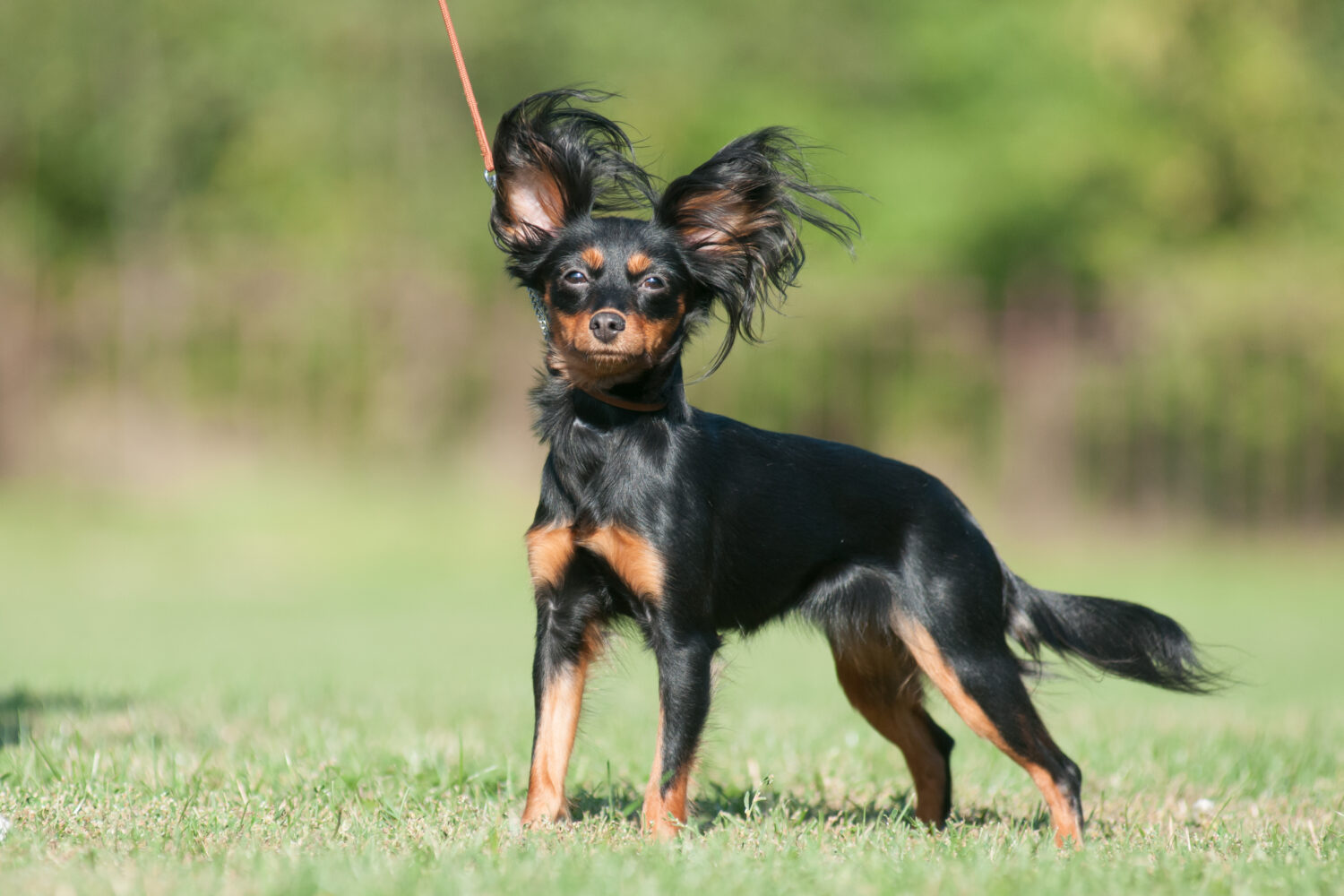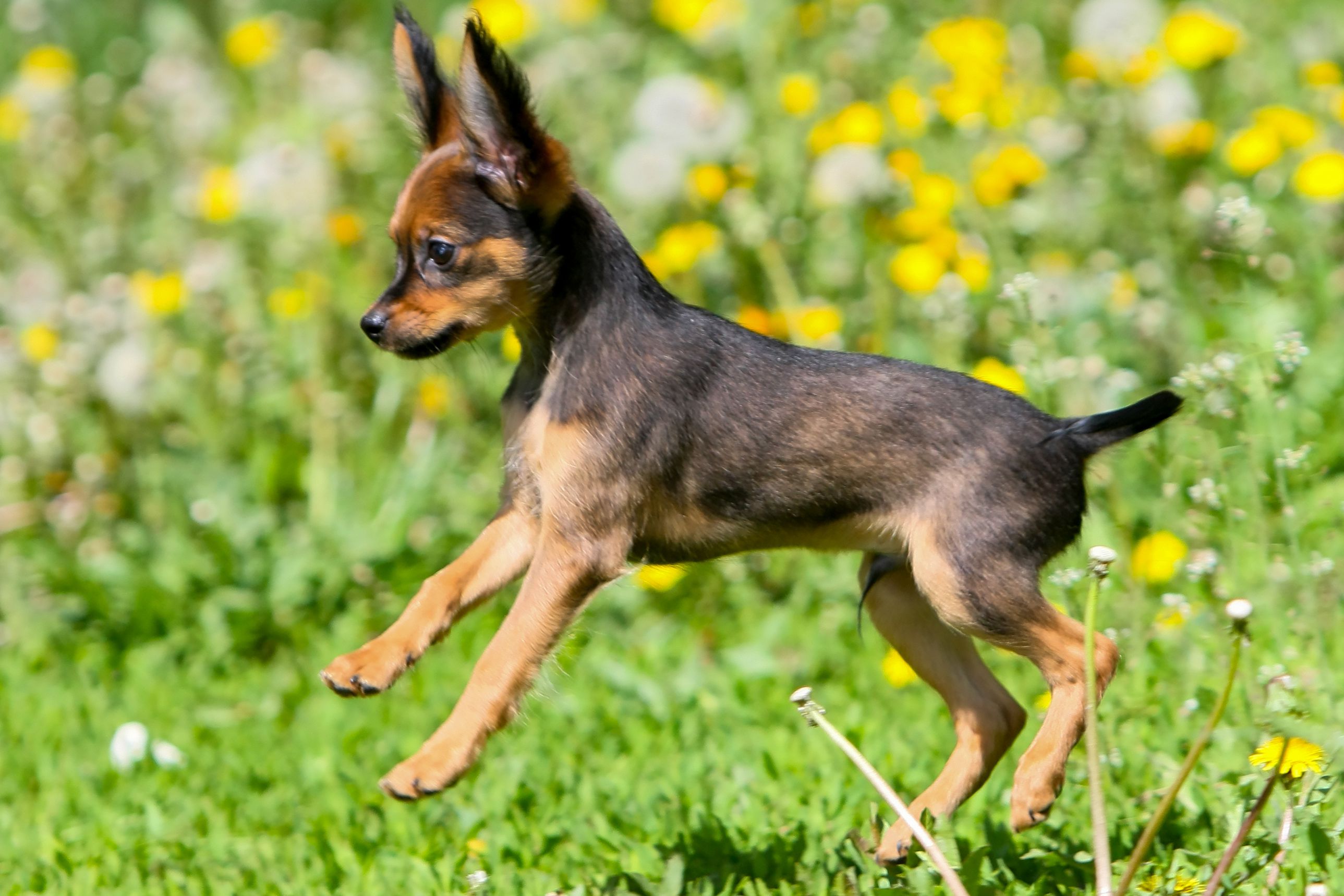Russian Toy: The Tiny and Elegant Companion

History of the Russian Toy
The Russian Toy is one of the smallest dog breeds in the world, originating in Russia during the 18th century. Initially developed as a companion dog for Russian aristocrats, it was a favorite among the Russian elite, particularly in the imperial courts. The breed is believed to have descended from small terriers and possibly some miniature breeds imported to Russia.
Although the Russian Toy's popularity waned during the Soviet era, the breed saw a revival in the late 20th century, and it is now recognized by various international dog clubs, including the Federation Cynalogique Internationale (FCI).
Popularity of the Russian Toy
Though relatively unknown outside of Russia until recent years, the Russian Toy has steadily grown in popularity, especially among those looking for a compact, elegant dog with a lively, affectionate personality. It’s particularly sought after by those who want a small, easy-to-manage companion with a distinctive look.
Its popularity has surged in Russia, and it has found a following in several European countries, where it’s admired for its diminutive size and elegant demeanor.
Physical Traits of the Russian Toy
The Russian Toy is a delicate and refined breed, with a graceful and alert presence.
• Height: 8–10 inches (20–26 cm)
• Weight: 3–7 pounds (1.5–3.2 kg)
• Build: Slender, fine-boned, and compact
• Coat: Two varieties—smooth and long-haired; the long-haired variety has a silky coat with a slightly feathered look.
• Color: Various colors are accepted, including black, tan, blue, and fawn.
• Head: Small, wedge-shaped with a defined muzzle and expressive eyes
• Eyes: Almond-shaped, dark, and expressive
• Ears: Large, V-shaped, and set high, adding to the breed’s alert look
• Tail: Often carried high, slightly curled, and may be docked in some regions
Despite their small size, the Russian Toy carries itself with an air of elegance, and its charming expression makes it a true beauty in the toy dog category.
Behavioral Traits of the Russian Toy
The Russian Toy is a playful, lively, and affectionate breed, with a personality that matches its small size.
• Energetic: Full of energy, loves to play and run around
• Affectionate: Enjoys bonding with its family, particularly with a single person
• Alert: Good watchdog, though its small size limits its protective ability
• Confident: Doesn't let its size define its personality
• Intelligent: Quick learner, eager to please but can be a little stubborn at times
Despite being small, the Russian Toy is known for its big personality. It tends to be very attached to its human family members, often forming a strong bond with one or two people in particular.

Why Choose a Russian Toy?
The Russian Toy is a perfect fit for those looking for a small yet lively and affectionate companion.
Ideal for:
• Singles or couples who want a small, portable companion
• Active people who can keep up with its playful energy
• Those who appreciate a dog with a refined and elegant appearance
• Families with older children (due to its small size, it may not be suitable for very young children)
Not ideal for:
• Homes where a quiet, low-energy dog is preferred
• People who aren’t prepared to provide consistent attention to a dog that thrives on close companionship
• Households with very young children, as the dog’s delicate frame can be at risk
Caring for Your Russian Toy
The Russian Toy is relatively low-maintenance but needs careful attention to its health and exercise needs.
• Exercise: Moderate; requires daily play sessions and short walks.
• Training: Intelligent but can be stubborn. Positive reinforcement is key to training.
• Grooming:
o For smooth-coated varieties, only occasional brushing is needed.
o Long-haired varieties require regular brushing to keep their coat free of tangles.
• Living Environment: Best suited to apartment living or homes where it can be safely supervised indoors.
• Feeding: Feed a balanced, high-quality dog food appropriate for toy breeds.
The Russian Toy thrives on companionship and mental stimulation, so spending time with its family is important to keep it happy.
Health Considerations
While the Russian Toy is generally a healthy breed, it can be prone to certain health issues:
• Patellar luxation (knee joint problems)
• Dental issues (common in small breeds)
• Hypoglycemia (low blood sugar, particularly in puppies)
• Luxating lens (a condition affecting the eyes)
Its lifespan typically ranges from 12 to 15 years, with proper care and attention to its health.

Comparisons to Similar Breeds
• Chihuahua: Similar in size but with a different personality; Chihuahuas tend to be more assertive, while Russian Toys are generally more affectionate and delicate.
• Papillon: Both are small and intelligent, but the Papillon has a more extroverted personality, while the Russian Toy is often more reserved.
• Toy Manchester Terrier: Smaller and more energetic than the Russian Toy, with a sleeker build and a more determined personality.
Is the Russian Toy Right for You?
If you’re looking for a small but vibrant dog with a refined appearance and big heart, the Russian Toy might be a great fit. Perfect for those with an active lifestyle who can provide plenty of attention and love, it will repay you with endless affection.
However, be prepared for the needs of a delicate toy breed. Russian Toys should not be handled roughly or left unsupervised with small children.
Getting a Russian Toy
If you are considering adding a Russian Toy to your family, make sure to find a reputable breeder who tests for common health conditions and breeds for temperament and longevity.
United Pet Club offers resources for microchip registration, health record management, and grooming tips to help your Russian Toy thrive.
